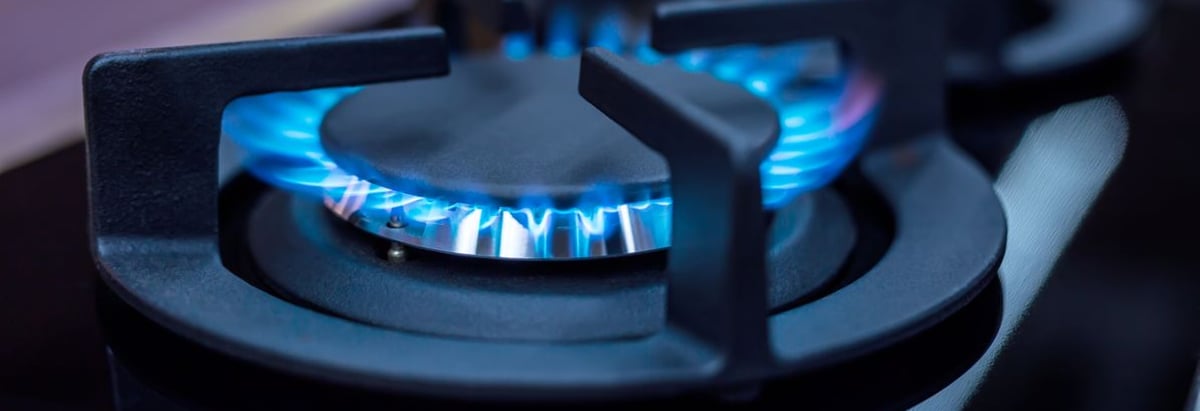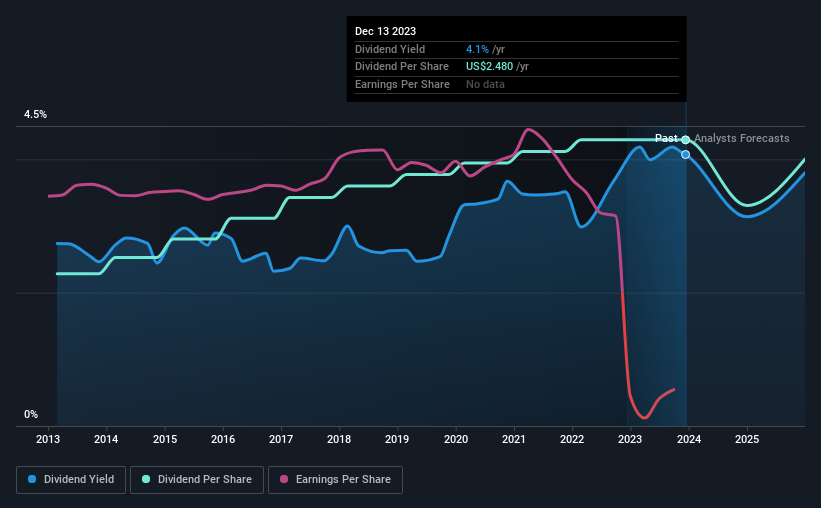
Southwest Gas Holdings, Inc. (NYSE:SWX) will pay a dividend of $0.62 on the 1st of March. This means the dividend yield will be fairly typical at 4.1%.
Check out our latest analysis for Southwest Gas Holdings
Southwest Gas Holdings' Dividend Is Well Covered By Earnings
We aren't too impressed by dividend yields unless they can be sustained over time. Even in the absence of profits, Southwest Gas Holdings is paying a dividend. It is also not generating any free cash flow, we definitely have concerns when it comes to the sustainability of the dividend.
Analysts expect a massive rise in earnings per share in the next year. Assuming the dividend continues along recent trends, we think the payout ratio will be 27%, which makes us pretty comfortable with the sustainability of the dividend.

Southwest Gas Holdings Has A Solid Track Record
The company has been paying a dividend for a long time, and it has been quite stable which gives us confidence in the future dividend potential. The annual payment during the last 10 years was $1.32 in 2013, and the most recent fiscal year payment was $2.48. This implies that the company grew its distributions at a yearly rate of about 6.5% over that duration. Companies like this can be very valuable over the long term, if the decent rate of growth can be maintained.
Dividend Growth Potential Is Shaky
Investors who have held shares in the company for the past few years will be happy with the dividend income they have received. Unfortunately things aren't as good as they seem. Southwest Gas Holdings' earnings per share has shrunk at 37% a year over the past five years. This steep decline can indicate that the business is going through a tough time, which could constrain its ability to pay a larger dividend each year in the future. Over the next year, however, earnings are actually predicted to rise, but we would still be cautious until a track record of earnings growth can be built.
Southwest Gas Holdings' Dividend Doesn't Look Sustainable
In summary, while it's good to see that the dividend hasn't been cut, we are a bit cautious about Southwest Gas Holdings' payments, as there could be some issues with sustaining them into the future. In the past the payments have been stable, but we think the company is paying out too much for this to continue for the long term. We would be a touch cautious of relying on this stock primarily for the dividend income.
It's important to note that companies having a consistent dividend policy will generate greater investor confidence than those having an erratic one. Meanwhile, despite the importance of dividend payments, they are not the only factors our readers should know when assessing a company. Case in point: We've spotted 3 warning signs for Southwest Gas Holdings (of which 2 are a bit concerning!) you should know about. Looking for more high-yielding dividend ideas? Try our collection of strong dividend payers.
New: Manage All Your Stock Portfolios in One Place
We've created the ultimate portfolio companion for stock investors, and it's free.
• Connect an unlimited number of Portfolios and see your total in one currency
• Be alerted to new Warning Signs or Risks via email or mobile
• Track the Fair Value of your stocks
Have feedback on this article? Concerned about the content? Get in touch with us directly. Alternatively, email editorial-team (at) simplywallst.com.
This article by Simply Wall St is general in nature. We provide commentary based on historical data and analyst forecasts only using an unbiased methodology and our articles are not intended to be financial advice. It does not constitute a recommendation to buy or sell any stock, and does not take account of your objectives, or your financial situation. We aim to bring you long-term focused analysis driven by fundamental data. Note that our analysis may not factor in the latest price-sensitive company announcements or qualitative material. Simply Wall St has no position in any stocks mentioned.
About NYSE:SWX
Southwest Gas Holdings
Through its subsidiaries, distributes and transports natural gas in Arizona, Nevada, and California.
Average dividend payer low.

